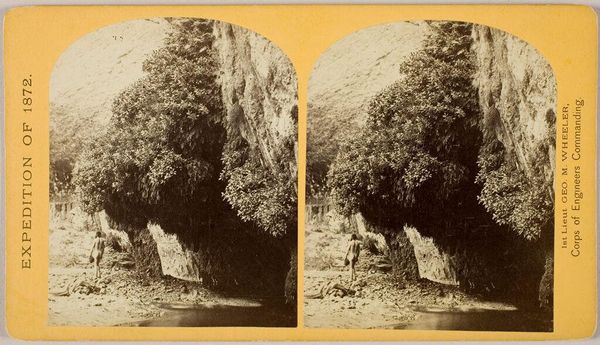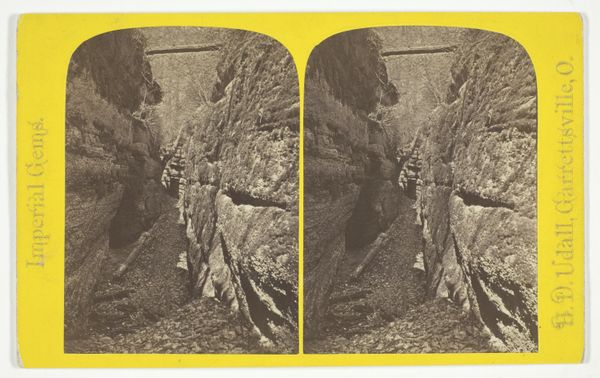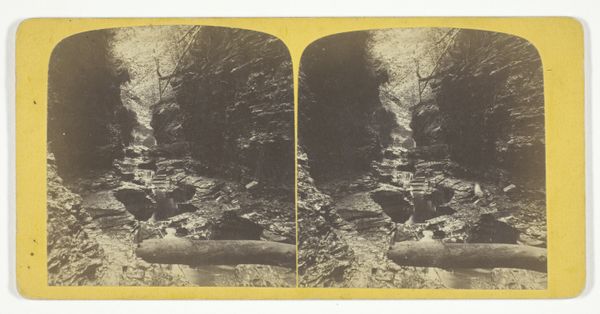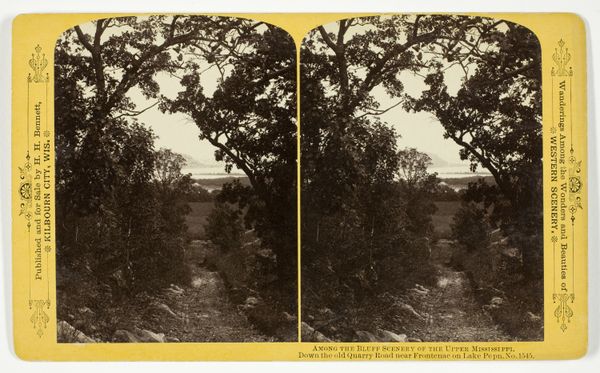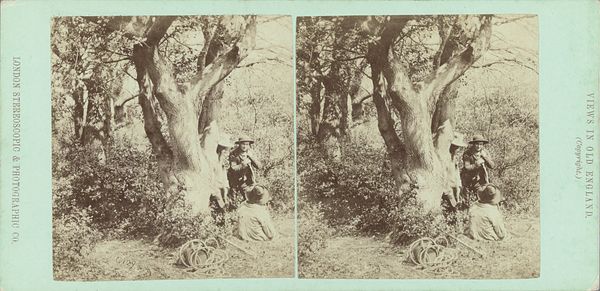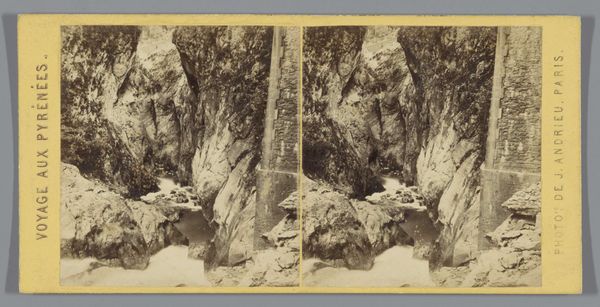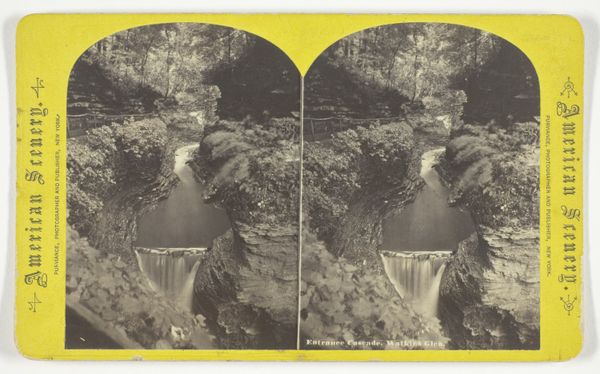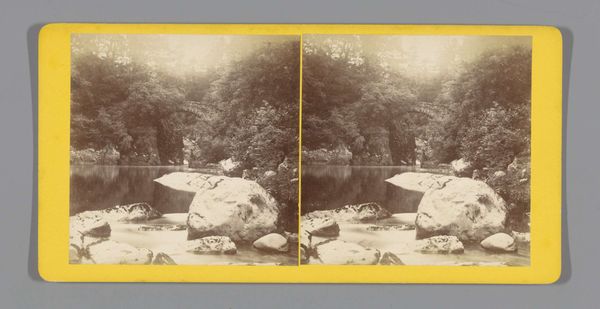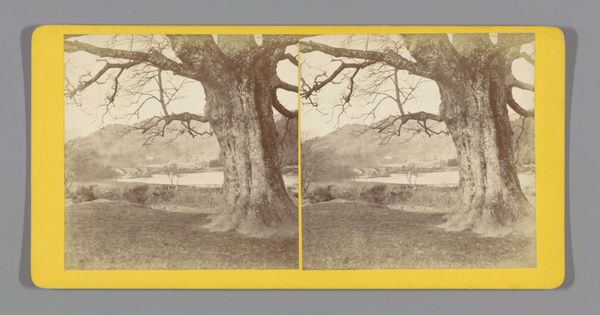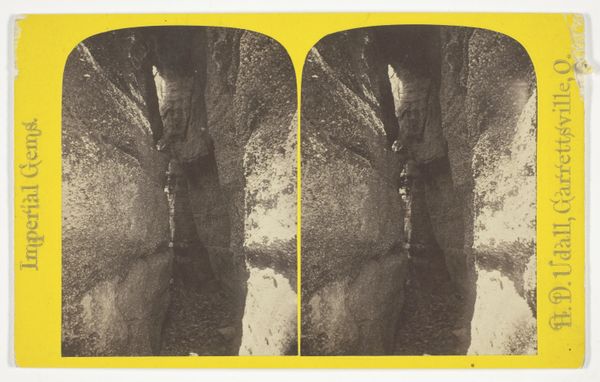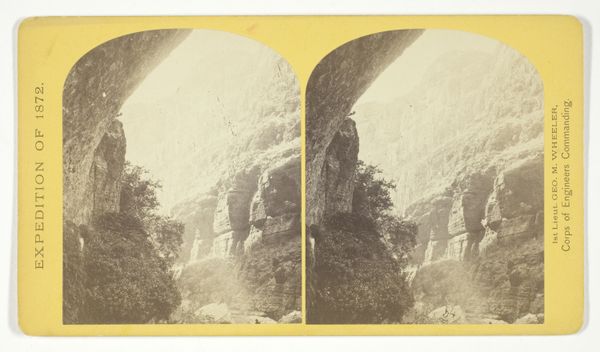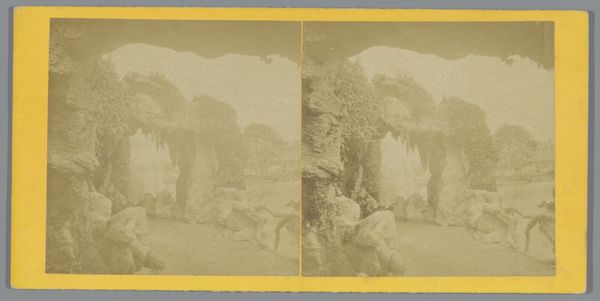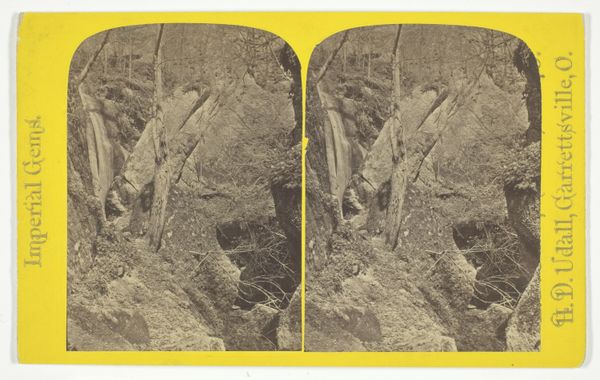
"The Bath," a dripping spring in Kanab Cañon. Temperature, 69° Fahr 1872
0:00
0:00
photography
#
16_19th-century
#
landscape
#
photography
#
realism
Dimensions: 9.3 × 7.4 cm (each image); 10 × 17.7 cm (card)
Copyright: Public Domain
Curator: This intriguing stereo card photograph, titled "The Bath, a dripping spring in Kanab Cañon. Temperature, 69° Fahr," was captured by William Bell in 1872. The artwork now resides in the collection of The Art Institute of Chicago. Editor: It's arresting. Even in this subdued monochromatic palette, the dense, almost claustrophobic interplay of rock and foliage generates a sense of hushed sacredness. There's something incredibly primeval in that convergence. Curator: I think your impression aligns with its place in history. As part of the Wheeler Expedition, photographs such as these served a very particular purpose: the surveying and mapping of the American West. The inclusion of the temperature almost turns the sublime into something clinical, a measurement of the landscape's potential for utilization. Editor: But there's also this individual figure in the landscape... almost insignificant against the vastness of the rock face and the foliage. Is he using "the bath"? It underscores a compelling juxtaposition: the individual's encounter with a nature being measured and categorized for posterity and profit. A subtle tension between romanticism and exploitation, perhaps? Curator: Exactly. It prompts questions about Manifest Destiny and the treatment of Indigenous peoples already inhabiting these areas. How did they perceive this "bath," this sacred space, before the expedition arrived? Editor: This highlights a critical shift in perspective. Before the systematic surveys and measurements, places like Kanab Cañon existed within the symbolic and cultural narratives of those who called it home. By fixing the temperature, measuring and mapping the site, they were fundamentally altering its cultural value. The human figure's inclusion might point to the viewer, inviting us into that contested space. Curator: Yes. In seeing through Bell's lens, we are also implicated. We are implicated in that moment of claiming and defining the land through photographic means, solidifying it in our collective visual memory and national story. It reveals much about our complicated, conflicted past. Editor: I see what you mean. I think this photograph serves as a subtle and disquieting record of that period, filled with these inherent tensions about how we assign value and meaning. It reveals much more than what its clinical caption might imply.
Comments
No comments
Be the first to comment and join the conversation on the ultimate creative platform.
